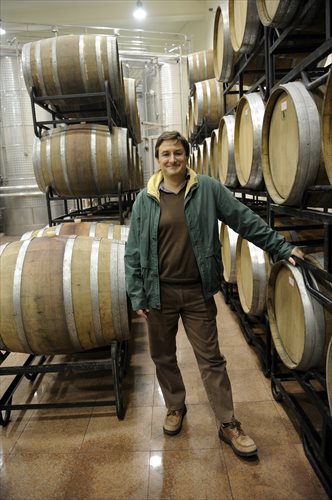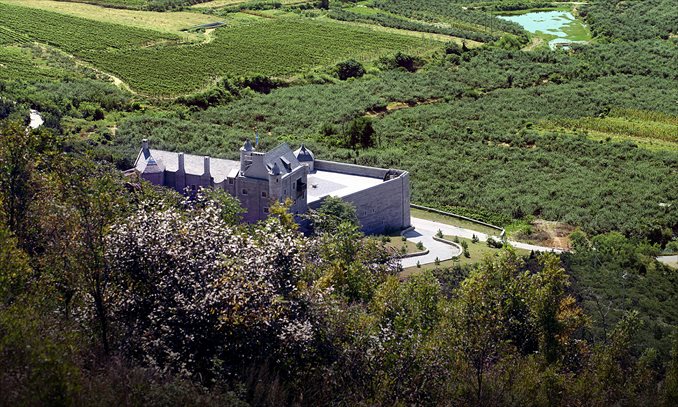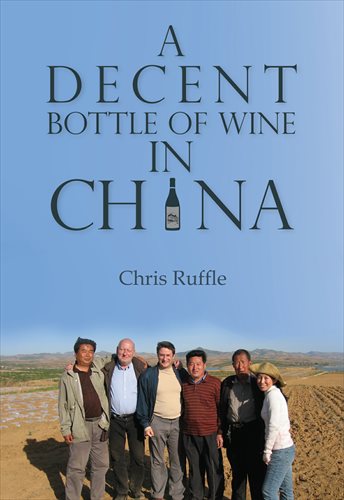Interview with Shanghai expat businessman turned winemaker-cum-author Chris Ruffle
Old China hand Chris Ruffle has spent the past 33 years in China involved in various multinational enterprises, from metal trading in Beijing to running his own fund management in Shanghai. Doing business in China has kept the Yorkshireman quite busy all these decades, but not busy enough to not indulge himself in his first passion - wine.
Going on 10 years now, Ruffle's moonlighting venture as a winemaker has involved him in more backroom dealings and wild journeys across the Chinese mainland than any of his prior undertakings. From the barren soils of Ningxia Hui Autonomous Region to the Penglai seaport in Shandong (where he has also built his very own castle), Ruffle has been on one long, continuous journey in search of a decent bottle of wine in China.
Having finally established himself and his own wine brand, Treaty Port Vineyards, Ruffle decided to spend the past few years jotting down his extensive experiences in the form of a memoir. Published right here in Shanghai by expat-run Earnshaw Books, Ruffle's new book A Decent Bottle of Wine in China has won critical acclaim in addition to being a commercial hit with fellow business-minded expatriates in China hoping to glean Ruffle's invaluable insight into China's exploding wine market.
Over a glass of Lady of Fashion, a blend of Chardonnay and Viognier grapes and Treaty Port's top white in 2014, the Global Times (GT) recently sat down with Ruffle (CR), an Oxford graduate with a degree in Chinese who is fluent in Putonghua and Japanese, to discuss his vineyard business, his book and his predictions for the future of Chinese wine.
GT: Treaty Port has a 300-mu (20 hectares) vineyard planted on granite soil between 2005 and 2007 in Mulangou village, Penglai county, Shandong Province. How have the locals reacted to this operation?
CR: The local government was delighted. They were keen to have investment in this very poor village. In return for my investment they agreed to build a road and provide telephone lines. It has been really good for the local villagers compared to when I first arrived. Before it was just a mud road with no lighting. I also hire locals. There's a core couple of employees which is like eight or nine. When we pick the grapes we have to bring a lot of extra people.
GT: Is it easy for you to cooperate with local farmers? Do they understand the concept of grape wine?
CR: They used to grow apples and peaches, which are famous from Penglai, but they were not familiar with grapes. It required training. At first they treated the grape vines like an apple tree. I also had to do the training in the morning because I found that at lunch they'd drink Chinese wine, which caused some accidents in the afternoon.
GT: How is the China market reacting to your unique brand of Shandong-ripened Merlot and Cabernet Sauvignon?
CR: My major customers are the government departments in Penglai county and Shandong Province. We also get tourist groups who come by and buy some bottles. I'm presently seeking a distributor for Beijing, Shanghai and Hong Kong, which are the major wine markets. Any fine hotel or restaurant in China should have a good Chinese wine on their menu. Chinese customers have become quite sophisticated. They understand which wines go well with the food they eat. I argue that Bordeaux wine is quite subtle but Chinese food is highly flavored, so it's not a very good match. Mostly the Chinese drink reds, but actually white is much nicer with Chinese food. For example, in Shandong we have very good seafood, and you don't want a heavy red with seafood.
GT: How do you find Chinese tastes? Can you suggest some good matches?
CR: I've found that Chinese don't like tannin (a substance in grape skins that causes dry-mouth), so we try to make our wine a little smoother. Chinese taste is inclined toward the fruity, which goes well with Chinese foods. It's been difficult to find a wine to match Chuancai (spicy Sichuan cuisine), but I found that a full, naturally sweet red wine like a Banyuls (French dessert wine) is a good fit. On the backs of our bottles we actually suggest what Chinese food goes well with which wine (e.g. the label for Treaty Port's top 2014 red, The Prince, a mix of Petit Verdot and Arinarnoa, suggests pairing it with braised pork and Xinjiang roast lamb).
GT: There are doubts about the quality of wine being produced in China. How have you dealt with this bad reputation?
CR: That's why we encourage people to come visit our vineyard. We'll show you our winery and explain how our wine is made. People often think, "oh you must water down your wine" (a common tactic by Chinese beverage makers) but you'll see there's only grapes in our wine. We'll also explain how we crush, ferment and package our wine. We are aware that food safety is a huge issue in China, so we want to make our customers feel confident and understand that this is very high-quality wine. But it'll take years and years to build up people's confidence.
GT: Do you consider your brand a Chinese wine or a mixed variety? Are you only focusing on the domestic market?
CR: We are definitely a Chinese wine. Which is funny because many Chinese brands want to pretend that their wine is French; they make fake French labels, which to me is stupid. Everyone has heard of Château Lafite Rothschild (a 19th century wine estate in France), but have you tried Treaty Port Vineyards from Penglai? Hopefully in the near future Chinese restaurants in Europe or the US will start serving "authentic Chinese wine" on their menus. The Chinese wine market is so huge and undeveloped; there is massive opportunity here. It just doesn't make sense to make wine somewhere else.

Chris Ruffle

The Treaty Port Vineyards castle in Penglai, Shandong Province

The cover of his new book A Decent Bottle of Wine in China
Photos: Courtesy of Chris Rufflle
Newspaper headline: The Grape Wall of China